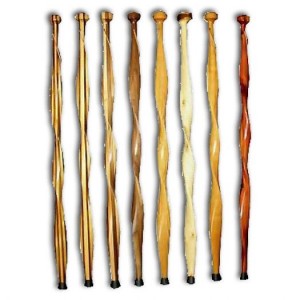Not all Amish furniture is made equivalent. While it may appear like all these carefully assembled pieces fit into one class, numerous angles make each bit of Amish furniture one of a kind notwithstanding with regards to the style itself. The two primary styles of Amish furniture are shaker and mission. Each have a one of a kind history and brag attributes that make them emerge from different choices.

To better clarify the distinctions of each style, and in addition their tremendous foundations, weve set up together an examination. We trust this guide will make picking amongst shaker and mission furniture simpler for you. While both fit into the Amish culture of basic, delightful and practical pieces, they offer diverse qualities that make them one of a kind. You may very well fall in the adoration with the qualities of every one.
The History of Shaker Furniture
The Shakers were initially a gathering of individuals who severed from the English Quakers. Known as a radical gathering amid that time, the Shakers received the name through religious love that included shaking of the hands, arms and head. They called themselves an a great deal more formal name the United Society of Believers in Christ’s Second Coming. After the gathering left the Church of England, they went to the United States in the 1770s and sunk into groups that took after strict principles which set them apart from the standard culture.

Their independent groups guaranteed that they depended on the land and their own particular diligent work to survive. Despite the fact that they flourished in these gatherings, the Shakers adhered near their standards of straightforwardness and modesty. These regions of practice could even be found in their style of furniture.

Ornamentation was viewed as wicked, regularly advancing pride. False completes were additionally maintained a strategic distance from in light of the fact that they were viewed as beguiling. Rather, the historical backdrop of shaker furniture implied straightforward furniture was made to meet their essential needs. It would in the end turn into a looked for after style utilized as a part of many homes today.
The History of Mission Furniture
Mission furniture came long after shake furniture assumed control over the scene. It wasnt until the nineteenth century that mission furniture arrived, for the most part on account of the rising interest of expressions and specialties. Joseph McHugh, a New York furniture creator, discharged a line of natural furniture including straightforward outline components for the Swedenborgian Church of the New Jerusalem in San Francisco. Many trusted the congregation seemed to be like Spanish missions that filled California and served the inhabitants there.
The name stuck when another fashioner, Gustav Stickley, discharged his own rendition of straightforward, handmade pieces. Mission remained an extremely well known outline up until the 1930s when the workmanship deco development assumed control over the scene. Today, the historical backdrop of mission furniture radiates through in numerous cutting edge pieces that mirror the straightforwardness and wonderful craftsmanship that made the style renowned.
Contrasts Between Shaker and Mission Furniture
Notwithstanding touching base at various circumstances ever, shaker and mission furniture offer recognizing complex contrasts you simply need to comprehend what youre searching for.
Shaker furniture can be recognized by its round wooden handles, decreased legs and unpretentious bends. These elements give shaker furniture its conventional, tender look. While maple wood additionally appeared to be the wood of decision for most shaker pieces, numerous advanced forms incorporate pine, maple, cherry or other American woods. amishalley.com highlights shaker style furniture in room sets, child furniture and lounge area sets.

One of the more prominent bits of shaker furniture is the shaker seat. Customarily made as lightweight as could be allowed and with a seat woven from regular materials, the seats were made so they could be held tight nails on the dividers until they were required. The extra pegs around the base of the seat seen as a style include today were initially a practical element to help keep the seats off the ground. The seat is additionally normally composed at a point, so it’s agreeable to sit in and simple to get in and out of.
Here, well separate a couple of the attributes that are presently observed as style, yet had exceptionally commonsense purposes for the Shaker individuals.
Decreasing
Seen as a delightful and basic style include, decreasing was utilized to keep the seats and different household items as light as could be allowed. Along these lines, they could be moved off the beaten path when not being used or amid cleaning.
Turnings
Like decreasing, turnings assist get rid of unnecessary materials to make a piece lighter. Turned legs were made to offer similar outcomes. Now and again, both decreasing and turning should be possible to a similar household item.
